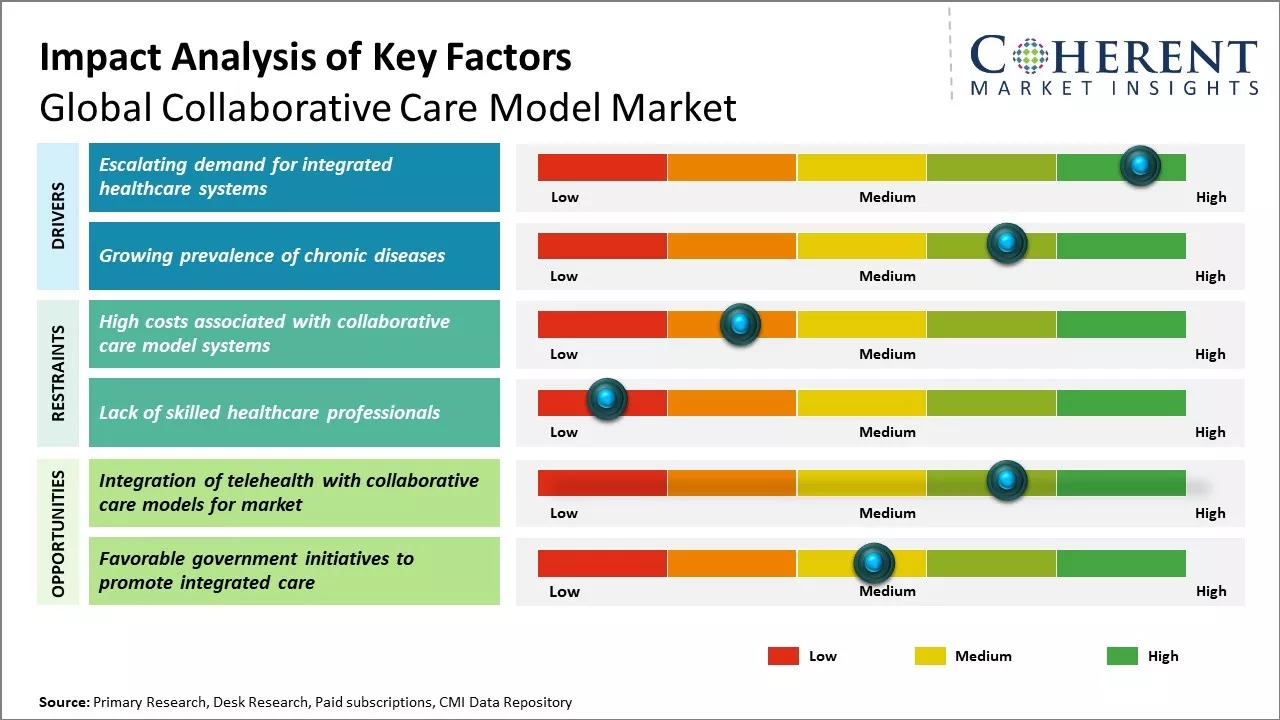Global collaborative care model market is estimated to be valued at USD 1.97 Bn in 2025 and is expected to reach USD 5.46 Bn by 2032, exhibiting a compound annual growth rate (CAGR) of 15.7% from 2025 to 2032. The model aims to enhance patient care by facilitating effective communication and movement of relevant information among a care team. This integrated team usually comprises primary care physicians, care managers, psychiatrists, therapists, and consultants.

To learn more about this report, Request sample copy
Increasing prevalence of chronic medical and behavioral health conditions boosts adoption of collaborative care models. Improving reimbursement landscape and emphasis on value-based care are incentivizing healthcare providers and organizations to implement collaborative care programs. The model's proven clinical effectiveness and ability to lower costs boosts its uptake.
Escalating demand for integrated healthcare systems
Healthcare systems are witnessing increasing pressure in the form of rising costs of treatment and limited resources. There has been growing need to cut costs and enhance efficiency of service delivery mechanism. This has boosted demand for collaborative care models where different healthcare service providers work in a coordinated manner to offer seamless healthcare services. Siloed approach of the past where individual departments such as primary care, specialty care, hospitals, and others worked independently is no longer relevant in the current scenario. Patients need all aspects of care to be well aligned right from preventive services, diagnostics, treatment, rehabilitation and others. Disjointed care often results in duplication of services, gaps in care continuum and higher costs. This highlights the requirement of collaborative networks where all stakeholders co-create strategic partnerships and information is shared seamlessly across care settings through digital platforms. With healthcare becoming increasingly complex due to advancement in treatment options, patients have complex needs. Their conditions often cut across multiple departments and resource pools. Coordinated care helps facilitate comprehensive management of health issues. It ensures proper communication flow between different providers and keeps patient needs and preferences at the focus of care delivery. This assures a more joined-up approach towards achieving optimal health outcomes.
Joining thousands of companies around the world committed to making the Excellent Business Solutions.
View All Our Clients